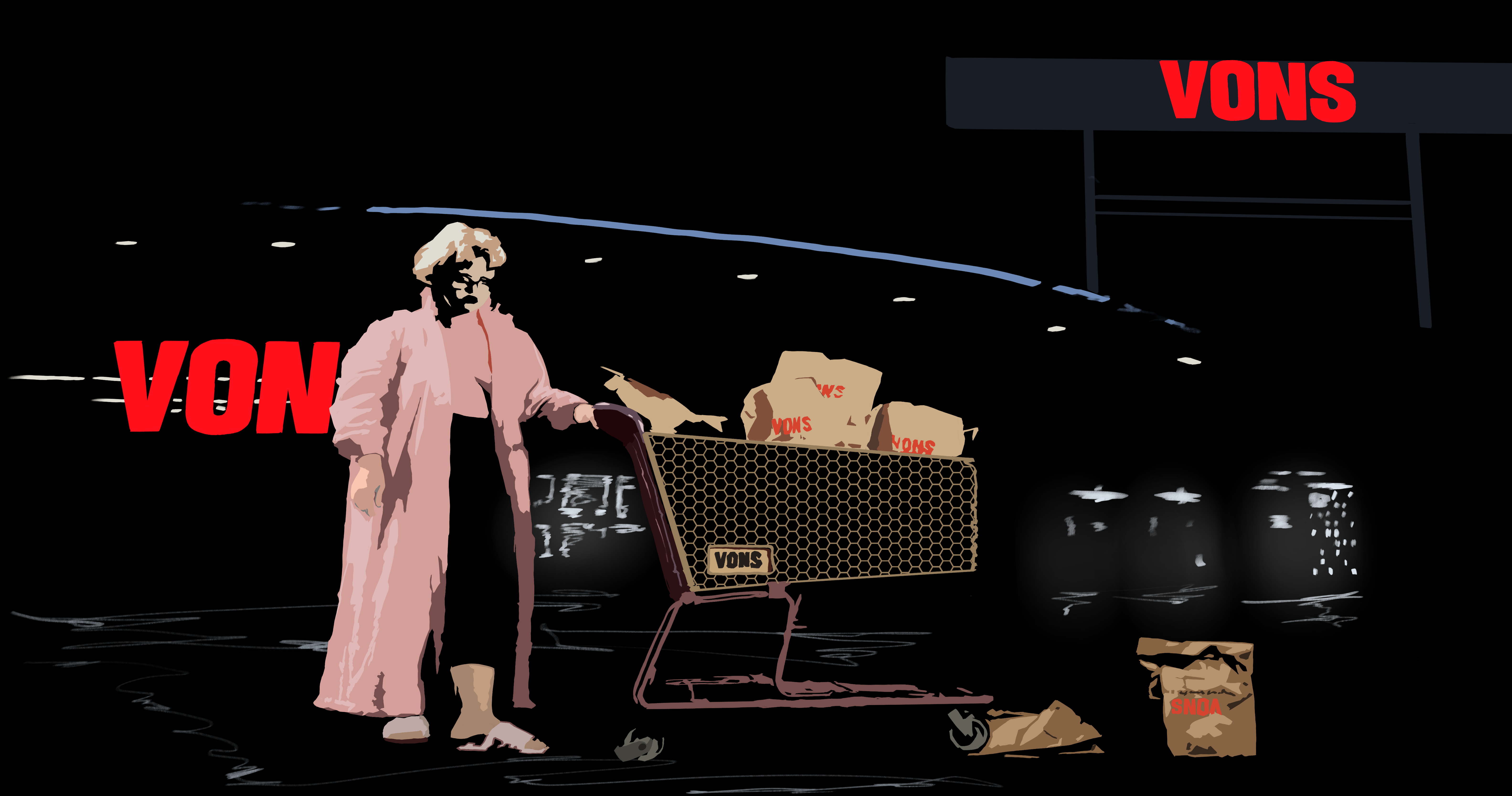[Spoilers ahead for I’m Thinking of Ending Things]
Charlie Kaufman’s 2020 film I’m Thinking of Ending Things was one of the most disturbing pieces of media of the last decade. It starts with Jake, a man in a relationship that is seemingly on its last legs, going to visit his elderly parents with his girlfriend. As the film unfolds, the audience is presented with brief, non-sequitur scenes of an elderly janitor in what looks like a high school watching old movies and lingering in the back of the rehearsals for the school’s production of Oklahoma. It slowly dawns on the audience that Jack, seemingly the protagonist of the story, is a fictional character created by the Janitor, who is in the midst of an intense internal struggle over whether or not to take his own life.
Jack represents a life that the Janitor wishes he lived, a life that almost subconsciously becomes increasingly dominated by the media that he consumes. The rom-coms that the Janitor watches become defining moments in the relationship between Jack and his equally imaginary girlfriend. Books that the Janitor has read mirror fights he has with his girlfriend and parents. This comes to a head in the final scene in which Jack and the Janitor, now one and the same, put on a show of Oklahoma, before following a cartoon pig — literally a mixture of reality and the media he has consumed — to his eventual suicide.
The Janitor’s desperate line of reasoning, that if he consumes enough media he will eventually be what he eats, hints at a line of collective reasoning that extends beyond a confusing Charlie Kaufman film. What the Janitor does is not far from a contemporary obsession with nostalgia, an obsession that has resulted in something of a cultural stagnation. The three highest-grossing movies of this year have been Godzilla vs. King King (a remake), Tom and Jerry (a reboot), and Raya and the Last Dragon (arguably Disney-Pixar’s most derivative film yet). The Billboard Top 40 is led right now by Dua-Lipa’s “Future Nostalgia,” a throwback to 70’s disco tracks, followed by the Foo Fighters newest album Medicine at Midnight, which is just more Foo Fighters. This isn’t even the end though, as the top ten has three separate archive albums of old and unreleased tracks from Queen, Taylor Swift, and Fleetwood Mac. Needless to say, this same trend continues into every industry, whether it be fashion, television, or even video games.
Of course, repetition or nostalgia aren’t new phenomena. Idolizing past periods of hypothesized progress and cultural revolution is a long standing tradition, illustrated by the fact that the word nostalgia itself is almost 500 years old. Moreover, ubiquitous nostalgia isn’t new either. The promise of most fascist regimes is the restoration of an idealized version of the state — Hitler didn’t want to make Germany great, he wanted to make it great again.
The nostalgia of today is far less pointed than the nostalgia of yesteryear. While Dazed and Confused uses 70’s nostalgia to comment on our seemingly insatiable desire to relive generations prior, Stranger Things is set in the 80’s because the 80’s is an aesthetic. The same can be said for the mindless retreads of old properties mentioned above: nostalgia seemingly for the sake of nostalgia.
Second is the seemingly random nature in which nostalgia appears. While Dazed and Confused may represent the 90’s interest in 70’s pop-culture, today’s nostalgia pulls from all eras of history to create a culture that is not nostalgic for a specific point in history, but rather nostalgic for history itself. It feels as if any time and any place would be better than here and now.
Nostalgia doesn’t end with the media. It has increasingly become pick and choose to adopt aesthetics of past generations to form our character. People adopt styles of dress, musical taste, and even cultural attitudes from generations prior. This is almost necessary as it can feel as if the 2010s to 2020s have almost nothing to offer in terms of cultural movements. If asked to describe what a song from the 80’s sounded like, the answer would be relatively obvious. If asked to describe what a song from the 2010s to 2020s sounds like, not even a look back at the aforementioned Billboard Top 40 could produce a coherent answer.
This is in large part because the way people, especially young people, experience time today is almost entirely unprecedented. It’s not too ludicrous to claim that Gen-Z (youths, people under the age of 25, whatever people want to call it) is the first generation in a long time that has not been promised a future. With the lingering threat of global warming being barely addressed in global politics combined with a gig economy built on the increasing inaccessibility of higher education, the narrative of “go to a good school and get a job” is becoming more and more fictional by the minute. This isn’t to complain about the trials and tribulations of being born in the 21st century, but rather to suggest that as it becomes harder and harder to picture tomorrow, the more society loses a grasp of the historical moment. Much like the Janitor, a future may not be guaranteed, but at least, media reminds everyone that there was a past.



